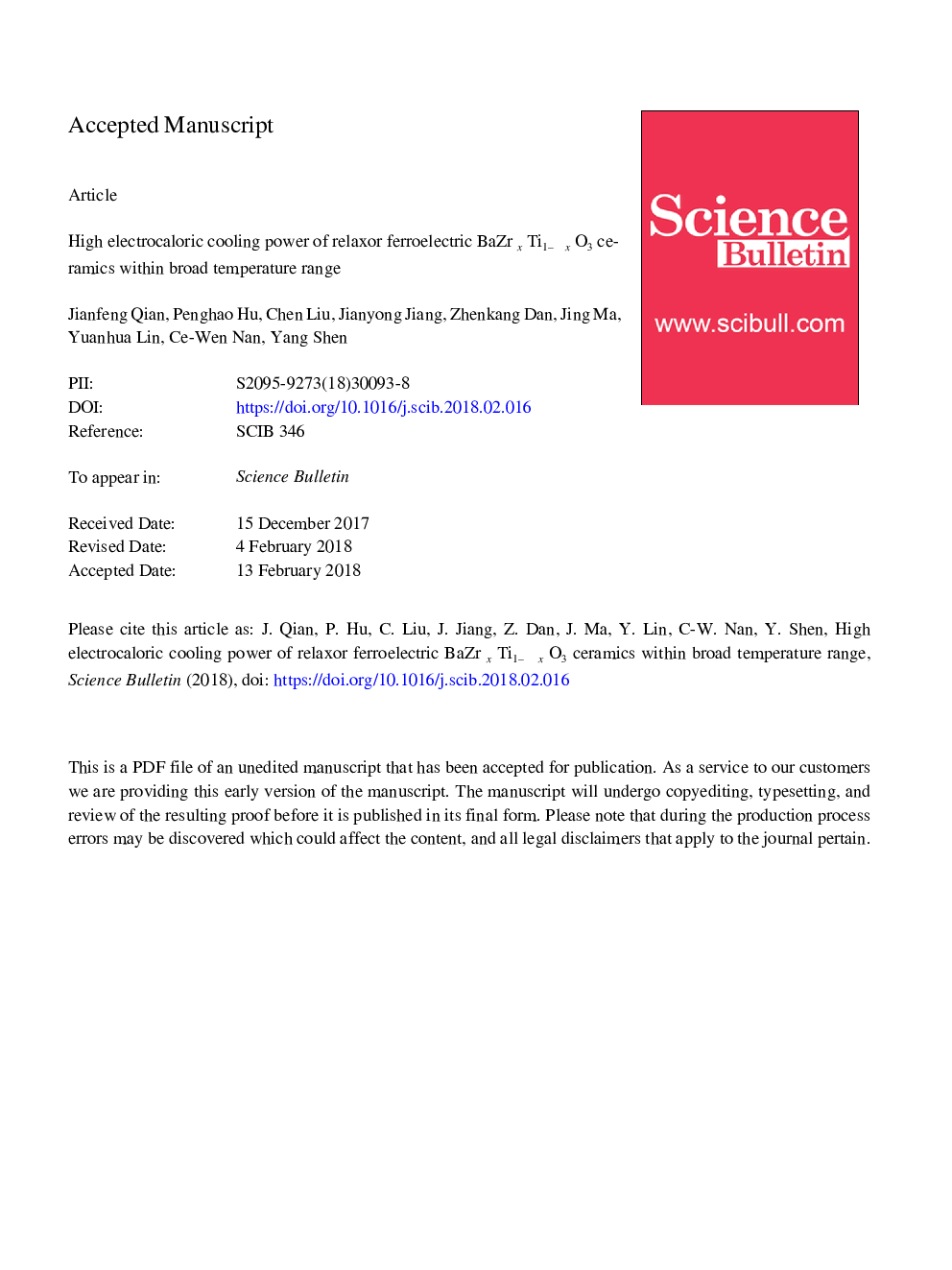| Article ID | Journal | Published Year | Pages | File Type |
|---|---|---|---|---|
| 8917313 | Science Bulletin | 2018 | 22 Pages |
Abstract
Electrocaloric effect (ECE) is much promising to realize high efficiency and environment friendly solution in solid cooling devices. Relaxor ferroelectrics are good candidates for the materials with high electrocaloric cooling power. In this paper, relaxor ferroelectric Ba(ZrxTi1-x)O3 (BZT, xâ¯=â¯0.2, 0.21, 0.22, 0.23) ceramics were prepared with their temperature change (ÎT) induced by the ECE and electrocaloric strength (ÎT/E) measured within broad temperature range. It is found that the BZT21 (xâ¯=â¯0.21) exhibits the largest ÎT of â¼4.67â¯K and a high ÎT/E value of â¼0.46â¯km/MV at 9.9â¯MV/m and 25â¯Â°C. BZT21 also exhibits apparent relaxor ferroelectric response, showing a very broad EC peak in the temperature interval between 15â¯Â°C and 50â¯Â°C. Moreover, the relationship between EC properties and relaxor features was analyzed by piezoresponse force microscopy test. The results reveal that more dispersed phase structures induce additional configurational entropy, which is in favor for the enhanced EC performance. The interplay and compromise between the kinetic and thermodynamic mechanisms of domain switching determines the optimal composition for the EC performances of the BZT ceramics.
Related Topics
Physical Sciences and Engineering
Chemistry
Chemistry (General)
Authors
Jianfeng Qian, Penghao Hu, Chen Liu, Jianyong Jiang, Zhenkang Dan, Jing Ma, Yuanhua Lin, Ce-Wen Nan, Yang Shen,
